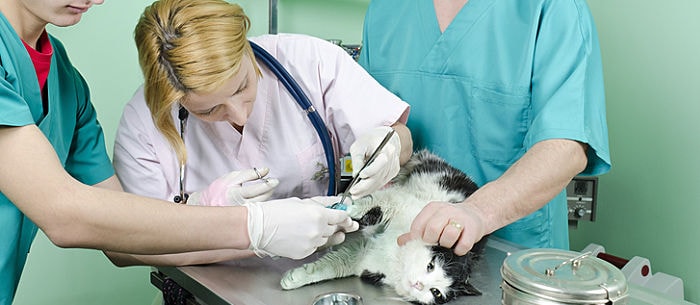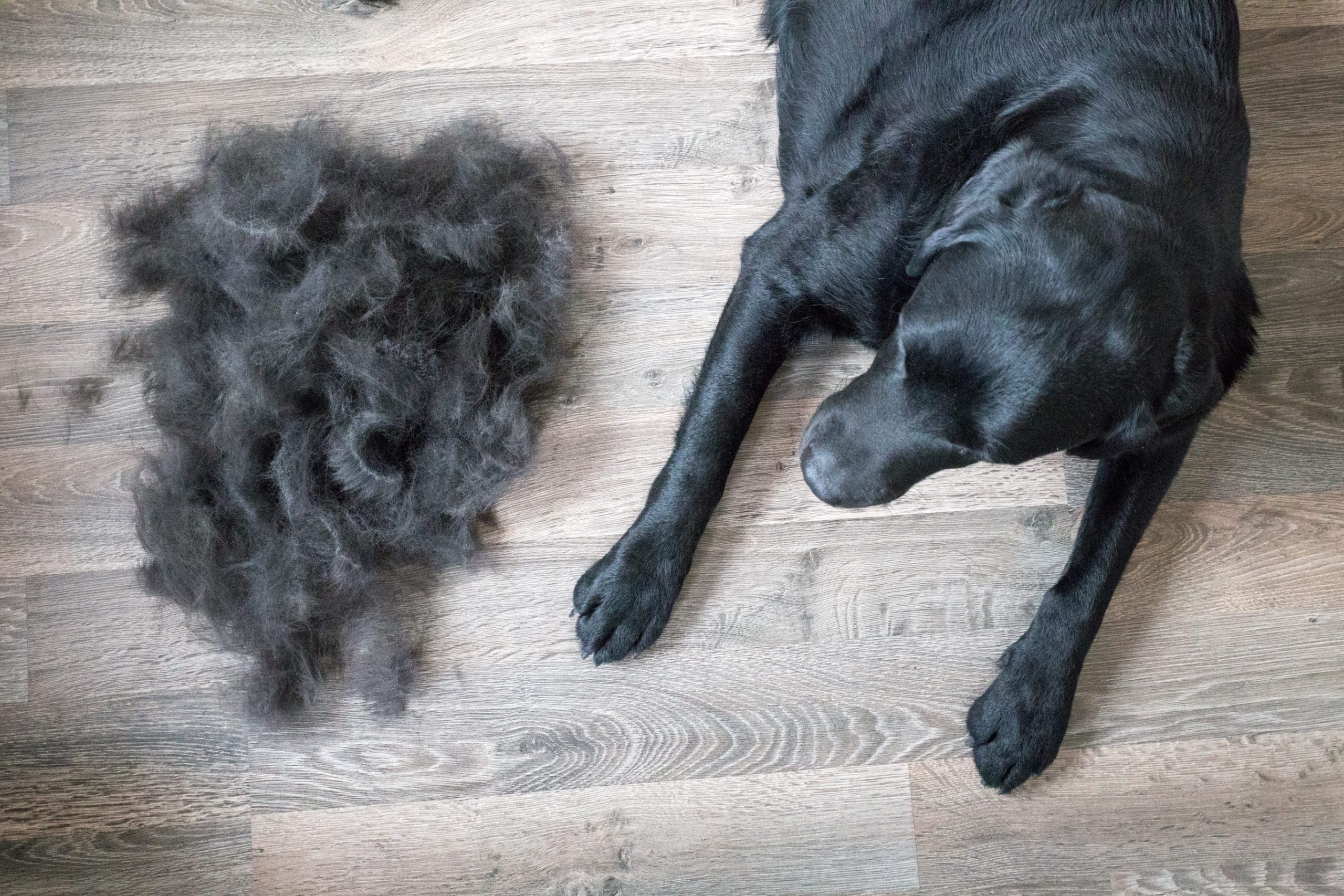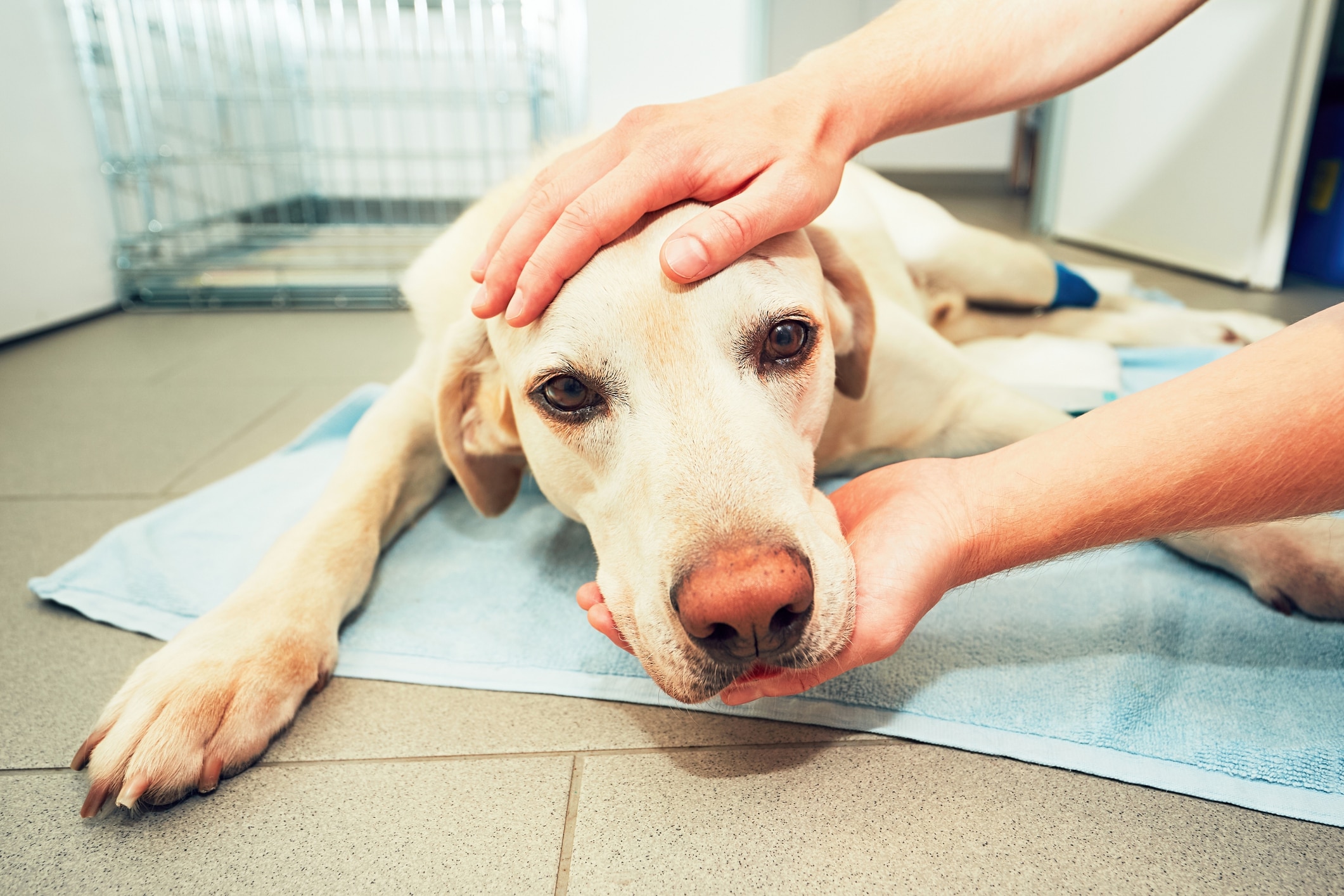Your cat seems a little under the weather and she has a swelling on her back that she keeps licking. Or maybe her face is looking kind of puffy. She might have an abscess.
What is a Cat Abscess?
A cat abscess is a painful wound caused by bacteria that gets under your cat’s skin. This bacteria usually comes from a scratch or a bite and most often occurs when cats get into fights.
“Cat mouths are really disgusting,” explains Dr. Justine Lee, the CEO and founder of VETgirl, a subscription-based continuing education podcast. “When a cat bites another cat and punctures the skin, it accumulates into a bacteria-filled pocket.” The bacteria lead to infection, and that’s when things go from bad to worse for your kitty. Within three to seven days, a small bite will turn into a festering, pus-filled pocket that will cause your cat extreme discomfort.
Know the Signs
According to the Humane Society of Silicon Valley, an abscess usually appears as a lump under your cat’s fur. You might only notice a slight swelling, or that your cat’s face looks swollen, or that your kitty just seems unwell.
“Most of the times I see a cat abscess, it’s from cats that are fighting outside. It’s a big problem in indoor/outdoor cats,” says Dr. Lee. What starts as a minor wound from a fight may look like a small cut in the skin, or you may see a little blood or feel a small scab. For the next day or so, your cat may appear sore, but nothing more. Once the abscess appears, the area becomes hot and painful.
“Acting lethargic, hiding and refusing to eat are some of the easier behavioral signs to spot,” says Dr. Lee. “When the abscess is drained, your cat’s behavior will quickly return to normal.” Your cat may exhibit signs of a fever, such as appetite loss, lack of energy, shivering and rapid breathing.
Your cat may also lick in or around the wound. The abscess becomes even more obvious once the abscess erupts and begins to drain. If your cat’s abscess opens up, it will produce blood and pus and emit an unpleasant odor.
How to Treat a Abscess
As soon as you suspect your cat has an abscessed wound, get to your veterinarian immediately. “It’s important to note that this is a very serious condition and needs immediate treatment by a vet,” says Michele Hoffman, the founder and president of Milo’s Sanctuary and Special Needs Cat Rescue in Burbank, California.
“Do not try to treat this at home.” Your veterinarian will treat, drain and clean the wound and will administer antibiotics to help your cat heal quickly and properly. “Very rarely, a cat abscess can be life-threatening if it goes untreated,” adds Dr. Lee. “The bacteria can go into the bloodstream and cause sepsis.”
Keep Your Cat From Licking His Wounds
One of the toughest challenges you’ll face is keeping your cat from adding insult to injury — that is, licking his wounds and making them worse. As mentioned earlier, cats’ mouths are teeming with bacteria, which means you want to keep them away from open wounds. The most effective deterrent is an Elizabethan collar, also known as a Buster Collar, E-Collar or, thanks to the movie Up, a “cone of shame.” While most cats can’t stand the bulky cone (and who can blame them?), it really is the best way to prevent wound licking. A less bulky inflatable collar may work on cats who simply can’t stand the E-Collar.
Prevent Fights
Of course, the safest treatment of all is keeping your pet out of harm’s way. “The best way to ‘treat’ an abscess is to prevent it to begin with,” says Hoffman. “Cats should be kept indoors at all times to avoid fighting with free-roaming cats and dogs, so make sure anybody coming into your house, including the pet sitter, knows to close the door quickly behind themselves.. Have your cat sterilized and make sure they are up to date on their vaccines.” And keep a close eye on any injuries, of course.
To learn more about preventing cat fights, read Cat Fight! Causes and Prevention Tips.
Cara Stevens is a freelance writer living in Connecticut with her husband and two children. She has authored several books for children and writes frequently about parenting, hair care, DIY crafts, food and healthy living. Follow her on Facebook and Twitter.
*This article is for general informational purposes only. It is not intended nor implied to be providing medical advice and is not a substitute for such advice. The reader should always consult a health care provider concerning any medical condition or treatment plan. Neither Care.com nor the author assumes any responsibility or liability with respect to use of any information contained herein.





